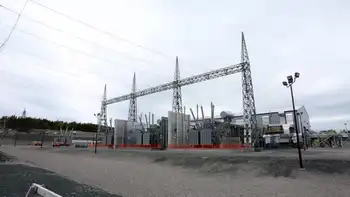Did Hydro-Québec miscalculate?
By Globe and Mail
Protective Relay Training - Basic
Our customized live online or in‑person group training can be delivered to your staff at your location.

- Live Online
- 12 hours Instructor-led
- Group Training Available
"When we speak of energy, we speak of ourselves. We speak of our ancestors. It's part of our DNA, of who we are politically," Mr. Charest said at the 385-megawatt station's opening in December.
It's true that hydroelectricity has been the uninterrupted current of Quebec politics since the Quiet Revolution. But that doesn't mean it's always been the matter of manifest destiny Mr. Charest would like us to think it is.
How else could Hydro-Québec find itself on the hook for about $150-million to Calgary-based TransCanada Corp. without a kilowatt to show for it? That is how much the massive publicly owned utility will pay TransCanada this year to mothball its spanking new co-generation power plant at Bécancour, Que., near Trois-Rivières.
Was it a simple, but embarrassing, forecasting error on Hydro-Québec's part that led it to inaccurately project supply and demand in 2008 and beyond?
Or is the TransCanada payout another example of the cost to taxpayers of the empire-building mentality that the utility has harboured since the province nationalized its hydro assets in 1962?
Transparency has never been Hydro-Québec's strong suit. So, trying to figure out the internal politics at the utility, which generates enough juice to power almost two Ontarios, is an energy-intensive endeavour.
In the fall of 2003, the utility unveiled a five-year plan that sent shivers through Quebeckers, who had long taken their province's electricity self-sufficiency for granted. Hydro-Québec warned of looming shortages unless the new power plants were green-lighted pronto.
It was in that context that Mr. Charest's government approved Hydro-Québec's construction of its own 900-MW gas-fired station west of Montreal, in a region known as Suroît, in addition to a proposal by TransCanada to build a $500-million, 500-MW co-generation facility at Bécancour.
Within months of that, the Charest government unveiled Quebec's most ambitious energy development agenda in a generation - all of which was music to the ears of the empire builders at Hydro-Québec. Under the Charest government's plan, about 9,000 MW in new hydroelectric and wind power capacity will come on stream by 2015.
The fiasco at Bécancour should lead any thinking person to question the wisdom of that plan.
More history: The Suroît station was never built. It became the focus of massive protest by environmental groups, rightly concerned that it would mar Quebec's image as a leader in clean energy. But the TransCanada project went up without as much as a peep from the protesters - or more precisely, the kind of peep that gets media attention.
The bright side is that no climate-warming vapours from Bécancour have been entering the atmosphere since January 1. TransCanada has agreed to shut down the station - which has been open barely a year - for all of 2008, and possibly longer.
In 2003, Hydro-Québec signed a 20-year contract to purchase the electricity produced at Bécancour at a rate tied to the price of natural gas. If it was a dubious deal for Quebec taxpayers then, it's a literally lousy one now.
Warmer winters, the recent closing of Norsk Hydro's magnesium refinery, and the slated shutdown of Abitibi-Bowater's Belgo paper mill are just a few developments that have left Hydro-Québec sitting on huge surpluses of power at least until 2010.
Not long ago, Hydro-Québec would have touted this as a boon to the bottom line. Surpluses could be exported to energy-starved utilities in Ontario or nearby U.S. states at prices higher than those charged to industrial consumers in Quebec.
Now, though, Hydro-Québec frets that if it were forced to buy power it no longer needs from TransCanada, it would have to sell it at below-cost rates on the North American spot market. It's cheaper to pay TransCanada to shut down Bécancour. The Alberta-based producer will get $54-million this year from Hydro-Québec not to produce any electricity, and another fixed fee of about $95-million that it must pay TransCanada whether Bécancour generates electricity or not.
So, if not hype, what are we to make of Hydro-Québec's plans? Not a single long-term export contract with Ontario or any U.S. state has been signed in years, raising doubts about whether any of the 9,000 MW worth of projects in the pipeline are needed or cost effective - especially if Hydro-Québec's talk of promoting conservation is at all serious.
Quebec's capacity to export power to Ontario will double by 2010, to about 2,500 MW, but the Ontario Power Authority's recent proposal for long-term development makes only passing reference to imports. Ontario is aiming to meet its requirements internally.
As usual, the big winners in all of this will be Quebec's aluminum smelters. With Hydro-Québec's big surpluses, their bargaining power to procure yet more cheap electricity has been re-energized. What a waste.











